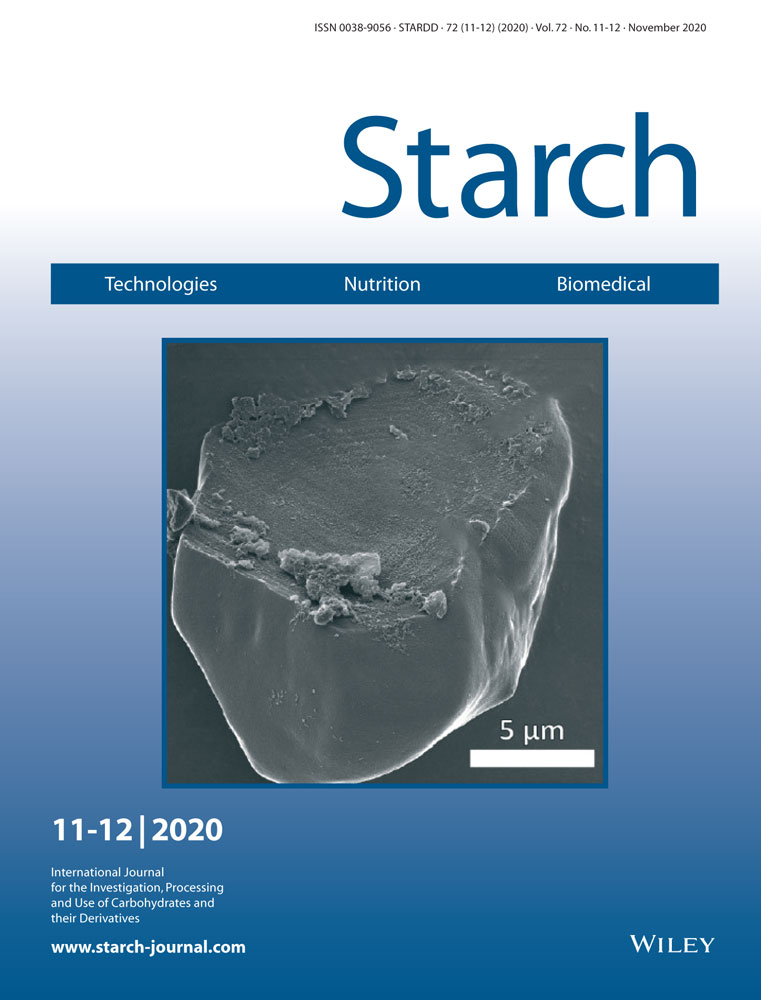Changes in Structural and Physicochemical Properties of Corn Flour after Fermentation with Lactobacillus plantarum Y1
Abstract
Corn flour is fermented with Lactobacillus plantarum Y1 at 37 °C for 60 h to modify its functional properties. The effects of the fermentation on structural and physicochemical properties of corn flour, starch, zein, and glutelin are investigated. Swelling power, solubility, water binding capacity, and light transmittance of corn flour increases significantly after fermentation. The fermentation process reduces the hardness and retrogradation tendency of corn flour dough; while, viscidity, elasticity, and cohesiveness of corn flour dough enhances after fermentation. Microscopy analysis shows that the surface structure of corn flour particles and starch granules become porous after fermentation. Starch isolated from the fermented corn flour shows greater viscosity, pasting temperature, and enthalpy values than those of starch isolated from ordinary corn flour. Zein hydrolyzes moderately and its secondary structure becomes more regular and ordered after fermentation. However, glutelin hydrolyzes to a greater extent and its secondary structure tends to be disordered after fermentation. Cakes made of the fermented corn flour show lower hardness and greater chewiness compared to those of cakes made of the ordinary corn flour. The obtained results indicate that the functional properties of corn flour can be successfully improved by the fermentation with L. plantarum Y1.
Conflict of Interest
The authors declare no conflict of interest.




